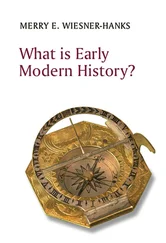R. Nisbet Bain - The Cambridge Modern History
Здесь есть возможность читать онлайн «R. Nisbet Bain - The Cambridge Modern History» — ознакомительный отрывок электронной книги совершенно бесплатно, а после прочтения отрывка купить полную версию. В некоторых случаях можно слушать аудио, скачать через торрент в формате fb2 и присутствует краткое содержание. Жанр: unrecognised, на английском языке. Описание произведения, (предисловие) а так же отзывы посетителей доступны на портале библиотеки ЛибКат.
- Название:The Cambridge Modern History
- Автор:
- Жанр:
- Год:неизвестен
- ISBN:нет данных
- Рейтинг книги:4 / 5. Голосов: 1
-
Избранное:Добавить в избранное
- Отзывы:
-
Ваша оценка:
- 80
- 1
- 2
- 3
- 4
- 5
The Cambridge Modern History: краткое содержание, описание и аннотация
Предлагаем к чтению аннотацию, описание, краткое содержание или предисловие (зависит от того, что написал сам автор книги «The Cambridge Modern History»). Если вы не нашли необходимую информацию о книге — напишите в комментариях, мы постараемся отыскать её.
The first series was planned by Lord Acton and edited by him with Stanley Leathes, Adolphus Ward and George Prothero.
The Cambridge Modern History Collection features all five original volumes:
Volume I: The Renaissance
Volume II: The Reformation, the End of the Middle Ages
Volume III The Wars of Religion
Volume IV: The 30 Years' War
Volume V: The Age of Louis XIV
The Cambridge Modern History — читать онлайн ознакомительный отрывок
Ниже представлен текст книги, разбитый по страницам. Система сохранения места последней прочитанной страницы, позволяет с удобством читать онлайн бесплатно книгу «The Cambridge Modern History», без необходимости каждый раз заново искать на чём Вы остановились. Поставьте закладку, и сможете в любой момент перейти на страницу, на которой закончили чтение.
Интервал:
Закладка:
Thus, in the course of the sixteenth century, the new studies gradually conquered a secure position in Germany. Broad and solid foundations were laid for the classical learning which Germans of a later age were to build up. But, while there was this progress in humane letters, the Teutonic movement showed nothing analogous to the Italian feeling for the aesthetic charm of ancient culture and existence. The German mind, earnest, and intellectually practical, had not the Italian’s delight in beauty of literary style and form, still less his instinctive sympathy with the pagan spirit. Germany drew fresh mental vigour and freedom from the Classical Revival, without adopting the Italian ideal of self-culture, or admitting a refined paganism into social life. The Teutonic genius, which had moulded so much of all that was distinctively medieval, remained sturdily itself. A like contrast is seen in the province of art. Michelangelo and Raff’aelle are intimately affected by classical influences; Dürer and Holbein, men of the same period, also show a new mastery, but remain Gothic. Thus the first period of Humanism in Germany presents a strongly-marked character of its own, wholly different from the Italian. So far as concerns the main current of intellectual and literary interests, the German Renaissance is the Reformation.
France had received the influences of Italian Humanism with the facility of a country to which they were historically congenial, and had been penetrated by them before the conflict opened by Luther had become a disturbing force in Europe. In France the basis of the national character was Latin, and no admixture of other elements could overpower the innate capacity of a Latin race to assimilate the spirit of classical antiquity. The University of Paris was one of the greatest intellectual centres in Europe, drawing to itself, in some measure, every new form of knowledge, while it promoted communication between Paris and all foreign seats of literary activity. It was in 1494, when the Italian Renaissance was at its height, that Charles VIII made his expedition to Naples. For nearly a century afterwards, until the line of the Valois Kings ended with the death of Henry III in 1589, the intercourse between France and Italy was close and continuous. A tincture of Italian manners pervaded the French Court. Italian studies of antiquity reacted upon French literature and art. Thus, from the beginning of the sixteenth century, France offered a smooth course to the Classical Revival. Greek studies had, however, been planted in France at a somewhat earlier time. In 1458 Gregory Tifernas, an Italian of Greek origin, had petitioned the University of Paris to appoint him teacher of Greek. He received that post, with a salary, on condition that he should take no fees, and should give two lectures daily, one on Greek and the other on rhetoric. The scholastic theology and logic were then still dominant at Paris, while the humanities seem to have occupied an inferior place. But, at any rate, the University had now given official sanction to the teaching of Greek. The eminent Byzantine, John Lascaris, lectured on that language at Paris in the reign of Charles VIII. His teaching was continued at intervals under Louis XII, who once sent him as ambassador to Venice; and also under Francis I, for whom he supervised the formation of a library at Fontainebleau. A still more eminent name in the early history of French humanism is that of the Italian Jerome Aleander, afterwards so strenuous an antagonist of the Reformation. Coming to Paris in 1508, at the age of twenty-eight, he gave lectures in Greek, Latin, and Hebrew, winning a reputation which caused him to be appointed Rector of the University. On his return to Rome in 1516 he became librarian of the Vatican, and in 1538 was made a Cardinal. Aleander, who was fortunate in the time of his work at Paris, has been regarded, probably with justice, as the first scholar who gave a decisive stimulus to philological studies in France. Just before the arrival of Aleander, Paris had begun to take part in the work of publishing Greek books, a field of labour in which its scholarly printers were afterwards to win so much distinction. The first Greek press at Paris was that of Gourmont, who in 1507 issued the Grammar of Chrysoloras, Hesiod’s Works and Days, the pseudo-Homeric Frogs and Mice, Theocritus, and Musaeus. Portions of Plutarch’s Mar alia followed in 1509, under the editorship of Aleander. After an interval, the length of which perhaps indicates that the demand for Greek classics was still very limited, a text of Aristophanes came from Gourmont’s press in 1528. A Sophocles was published by Simon Colinaeus in 1529. Robert Estienne (1503-59), scholar and printer, brought out in 1532 his Thesaurus Linguae Latinae, which was much enlarged in the succeeding editions (1536 and 1543). Among his Greek editiones principes were those of Eusebius (1544-6), Dionysius of Halicarnassus (1547), Dio Cassius (1548), and Appian (1551). His son, Henri Estienne (1528-98), who had the distinction of first printing the Agamemnon in its entirety, is especially remembered by his great work, the Thesaurus Linguae Graecae (1572). Before the middle of the century the stream of classical publications had fairly set in at Paris, and thenceforth continued to be abundant. Meanwhile a French scholar had arisen who reflected lustre on his country throughout Europe. Budaeus (Guillaume Bude, 1467-1540), after producing in 1514 an able treatise on Roman money (De Asse), gained a commanding reputation by his Commentarii Linguae Graecae, published at Paris in 1529. That work proved a mine to lexicographers, and was more particularly useful to students of the Greek orators, owing to the care which the author had bestowed on explaining the technical terms of Greek law. Budaeus was, beyond question, the best Greek scholar of his day in Europe, being superior in that respect to Erasmus, though no rival to him in literary genius. But special knowledge is superseded, while the salt of style lasts for ever; and Erasmus lives, while Budaeus is wellnigh forgotten. The relations between these two distinguished men became somewhat strained, through the fault, as it would seem, of Erasmus, whose sly strictures on the Frenchman are certainly suggestive of a covert jealousy; and French scholars made the quarrel a national one. Another French Hellenist of great eminence at this period is Turnebus (Adrien Turnebe, 1512-65), who belonged to the generation following that of Budaeus. The Royal College had been founded at Paris by Francis I, in 1531, with the special object of encouraging Greek, Latin, and Hebrew learning. Turnebus was appointed, in 1547, to the chair of Greek at that College. He also held the office of King’s printer. One of his chief works was an edition of Sophocles, published at Paris in 1553, which did much to determine the text followed by later editors of that poet before Brunck. Henri Estienne, who had been a pupil of Turnebus, has recorded his veneration for him. A better-known tribute is that paid by Montaigne, his junior by twenty-one years, who declares that “Adrianus Turnebus knew more, and knew it better, than any man of his century, or for ages past.” He was entirely free, as Montaigne testifies, from pedantry: “his quick understanding and sound judgment” were equally remarkable, whether the subject of conversation was literary or political. Lambinus (Denys Lambin, 1520-72), who in 1561 became a professor at the Royal College, published editions of Horace and Cicero which made a new epoch in the study of those authors. Auratus (Jean Dorat, 1507-88), poet and scholar, who taught Greek at the College, shone especially in the criticism of Aeschylus. Mention is due also to the ill-fated Estienne Dolet (1509-46), who took up the cause of the Ciceronians against Erasmus, and in 1536, at the age of twenty-seven, published his two folio volumes Commentariorum Linguae Latinae. Ten years later, he was unjustly condemned by the Sorbonne on a charge of atheism, and put to a cruel death. It should be noted that French scholars won special distinction in the study of Roman Law. Instead of relying on commentators who had merely repeated the older glossatores, they turned to the original Roman texts. Cujacius (Jacques Cujas, 1522-90), the greatest interpreter of the sources of law, struck out a new path of critical and historical exposition. Donellus (Hugues Doneau, 1527-91) introduced systematic arrangement by his Commentarii luris Civilis. Brissonius (Barnabe Brisson, 1531-91) was pre-eminently the lexicographer of the civil law. Gothofredus (Denys Godefroy, 1549-1621) produced an edition of the Corpus Juris Civilis which is still valued. His son Jacques (1587-1652) edited the Theodosian Code.
Читать дальшеИнтервал:
Закладка:
Похожие книги на «The Cambridge Modern History»
Представляем Вашему вниманию похожие книги на «The Cambridge Modern History» списком для выбора. Мы отобрали схожую по названию и смыслу литературу в надежде предоставить читателям больше вариантов отыскать новые, интересные, ещё непрочитанные произведения.
Обсуждение, отзывы о книге «The Cambridge Modern History» и просто собственные мнения читателей. Оставьте ваши комментарии, напишите, что Вы думаете о произведении, его смысле или главных героях. Укажите что конкретно понравилось, а что нет, и почему Вы так считаете.












